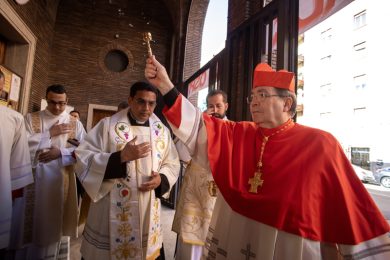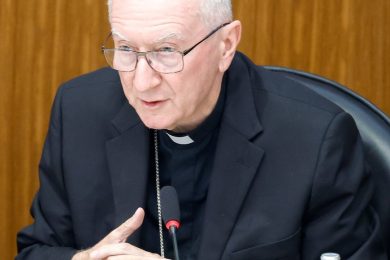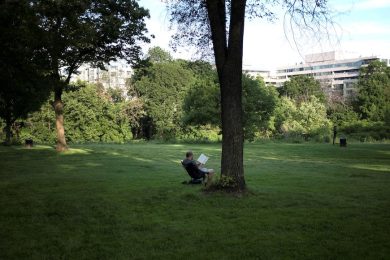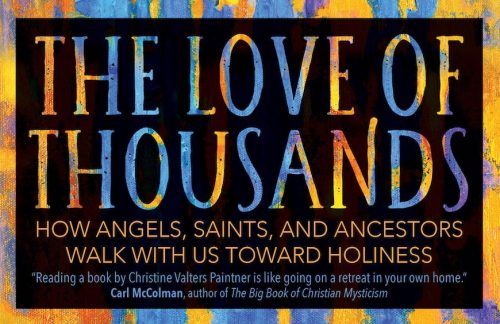By Charlie Camosy
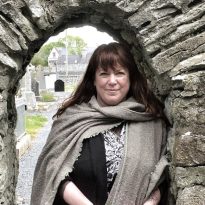
Christine Valters Paintner is a Benedictine Oblate living in Galway, Ireland and the online “abbess” for Abbey of the Arts, a virtual “monastery” offering classes and resources on creative expression and the practice of contemplative prayer. An author of 17 books centered on monasticism, creativity and three collections of poetry, Paintner earned a doctorate in Christian spirituality from the Graduate Theological Union in Berkeley, California and is trained in spiritual direction and supervision.
Together with her husband, John, she leads online retreats at the “abbey” (www.AbbeyoftheArts.com), where one can find supporting material for her latest book, “The Love of Thousands: How Angels, Saints and Ancestors Walk With Us Toward Holiness” (Sorin Books), including a companion album and a seven-day cycle of morning and evening prayer.
Charlie Camosy: I suppose I am not the first to suggest that one of the fundamental challenges that a book like “The Love of Thousands” faces is the fact that consumerist Western culture has been largely “disenchanted.” That is, many of us find it very difficult even to take seriously the ideas at the center of your book.
Christine Valters Paintner: Indeed, one of the reasons such a book is needed at this time is precisely because the capitalist consumer culture we swim in deadens us to anything beneath the surface. From the relentless push of busyness to the endless striving for achievement and acquisition, so many are exhausted and don’t even realize it.
Often what happens is there is a rupture in this way of being — an illness or a loss — which slows us down long enough to examine our patterns. It might help spark the question: “Is there more to my life than this?”
Re-enchantment is one of the many pathways we can take toward a slower, more spacious, more loving way of being in the world. When we cultivate wonder and gratitude, our hearts expand. Other pathways include listening to our dreams — so many biblical figures and saints had dreams which changed the direction of their lives — or honoring our body’s wisdom, our intuition and the call of the natural world. These are all paths to being able to see things in a new way, with “eyes of the heart,” as St. Paul wrote (Eph 1:18).
Slowly we may begin to notice synchronicities and connections that we didn’t before, and we begin a slow journey of trusting that there is a depth of wisdom and insight available to us when we take time to listen. These ruptures are often very painful but can be an opening to the support of the love of thousands reaching toward us.
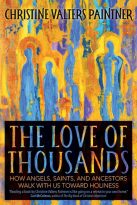
Camosy: Nearly all ancients and medievals believed angels were intimately involved in their lives, yet we almost never talk about angels today. The first three chapters of your book focus on angels. Can you tell us why?
Paintner: I was so delighted when I started researching this book to discover that angels were not only significant in Christian belief, but in Judaism and Islam at well. It speaks to a human hunger for connection to these energetic sources of support. In contemporary belief, we hear more about angels through what might be called New Age writings, but these often don’t feel satisfying to us.
One of the reasons I think we don’t talk much about angels in our churches and in the wider culture is because we have been indoctrinated into a very individualistic mindset. We think we are on our own and have to make things happen by ourselves, to not rely on others. To believe in angels and other kinds of spiritual beings, like saints and ancestors, demands vulnerability. It means we must allow ourselves to really feel the fragility of being human. We have to be willing to reach out for support on many different levels, and the church teaches this “cloud of witnesses” is there for us.
Camosy: Chesterton famously reminded Catholics that we give our ancestors a “vote” by considering the church’s tradition. He even refers to a “democracy of the dead.” What are some ways that we can connect to our ancestors?
Paintner: Connecting to our ancestors is like cultivating a friendship. It takes time, presence and intention. We can begin with something simple like offering a prayer each day, asking the wise and well ancestors to be present with us. Perhaps there is a particular loved one who has passed away you can connect with and ask for support and guidance. Creating an ancestor altar is also a powerful way to build connection. It can be as simple as a small table or mantle where you put some family photos, adding a candle and some symbols from nature or something that belonged to a loved one. I love to walk outside and notice what symbols call to me as I pray for this ancestral connection. Our churches dedicate the month of November to remembrance of the dead, so this is a perfect season to begin a practice like this. Make a commitment to praying each day in memory of our loved ones as well as the ancestors we did not know.
We can gain appreciation of our ancestors as well if we know anything of our DNA or the lands where our families lived. We can do a little research online to discover the significant events that impacted them, or to find stories or songs passed down, or learn a few words of the language they spoke. This way we can open to understanding their life experience just a bit more and honor how that wisdom flows through us. They too endured plagues, famines and war, and they pass that resilience on to us.
Camosy: How did your own season of loss lead you to a new understanding of angels, saints and ancestors who walk with us?
Paintner: My mother died suddenly in 2003, and it ushered me into a very long season of grief. I am so grateful to a spiritual director who introduced me to the wisdom of connecting with our ancestors. This began a long journey of praying and opening my heart, as well as physical pilgrimages to ancestral lands. As an only child who lost both parents, and having no children of my own, I felt an aching loneliness. Connecting to my ancestors helped me to experience myself as woven into a great tapestry of wisdom and love.
The saints are essentially our spiritual ancestors who are wise and well. We reverence them because they, too, lived through great struggles and losses. The “communion of saints” became an extension of that tapestry. I imagine them dancing beyond the veil between worlds calling us always to deeper love. Like many, I have particular saints who are strong guides for me, especially St. Hildegard of Bingen and St. Benedict of Nursia, as a Benedictine oblate myself.
After I lost my mother there were so many moments of feeling held and comforted, of magical moments when I heard messages of comfort.
I love to walk through cemeteries with statues of fully grown angels, as I can feel the strong shelter of their wings. They exist to support us and our flourishing.
– – –
Charlie Camosy is professor of medical humanities at the Creighton School of Medicine in Omaha, Nebraska, and moral theology fellow at St. Joseph Seminary in New York.




